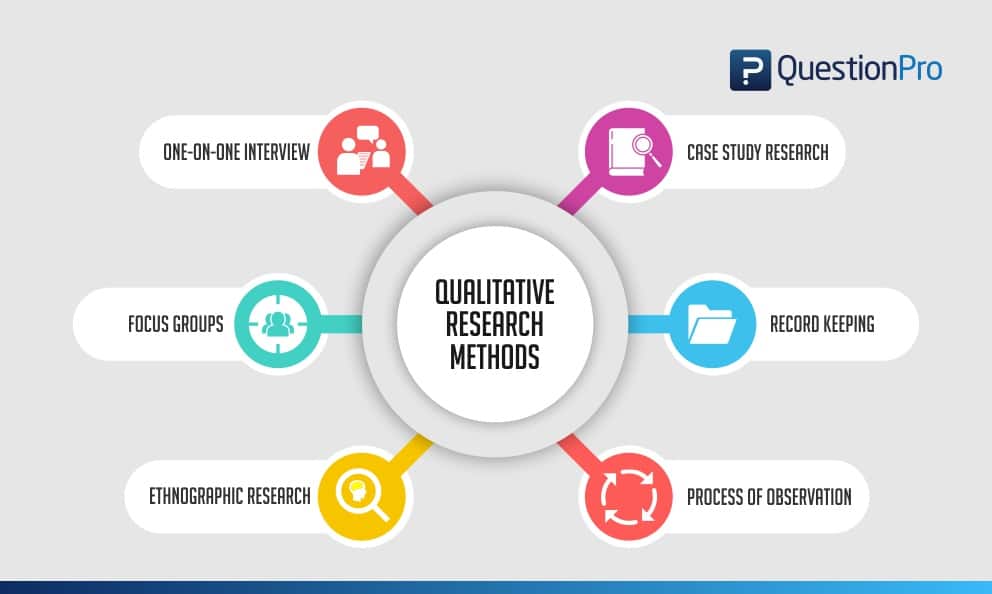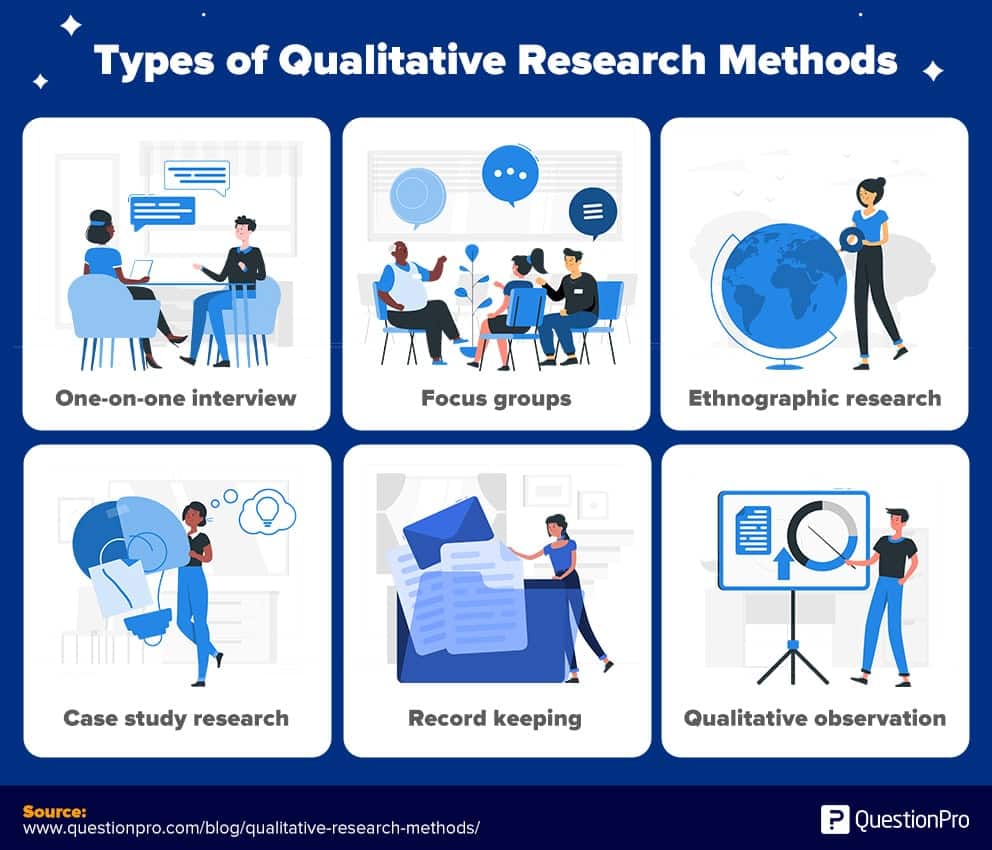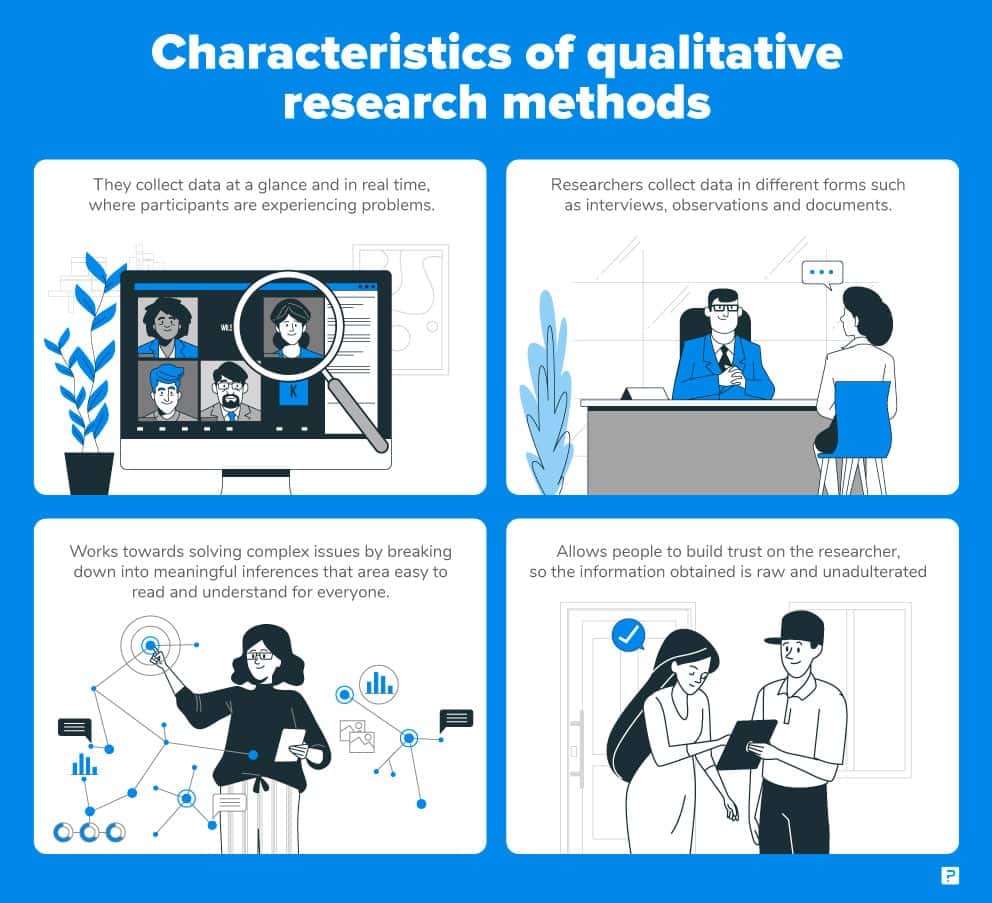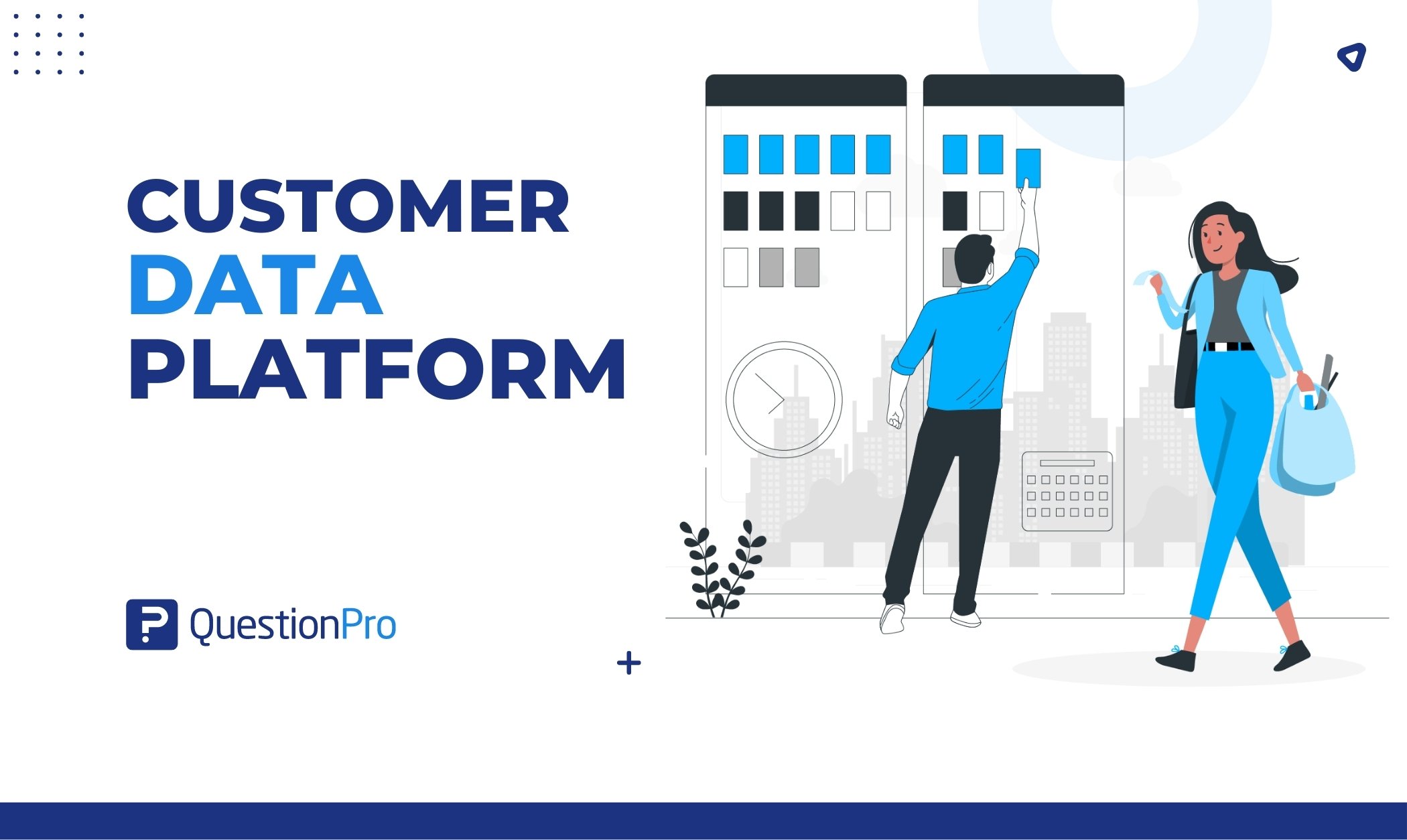
Qualitative research is based on the disciplines of social sciences like psychology, sociology, and anthropology. Therefore, the qualitative research methods allow for in-depth and further probing and questioning of respondents based on their responses. The interviewer/researcher also tries to understand their motivation and feelings. Understanding how your audience makes decisions can help derive conclusions in market research.
What is qualitative research?
Qualitative research is defined as a market research method that focuses on obtaining data through open-ended and conversational communication.
This method is about “what” people think and “why” they think so. For example, consider a convenience store looking to improve its patronage. A systematic observation concludes that more men are visiting this store. One good method to determine why women were not visiting the store is conducting an in-depth interview method with potential customers.
For example, on successfully interviewing female customers, visiting the nearby stores and malls, and selecting them through random sampling, it was known that the store didn’t have enough items for women. So fewer women were visiting the store, which was understood only by personally interacting with them and understanding why they didn’t visit the store because there were more male products than female ones.
Types of qualitative research methods with examples
Qualitative research methods are designed in a manner that help reveal the behavior and perception of a target audience with reference to a particular topic. There are different types of qualitative research methods like an in-depth interview, focus groups, ethnographic research, content analysis, case study research that are usually used.
The results of qualitative methods are more descriptive and the inferences can be drawn quite easily from the data that is obtained.
Qualitative research methods originated in the social and behavioral research sciences. Today our world is more complicated and it is difficult to understand what people think and perceive. Online qualitative research methods make it easier to understand that as it is more communicative and descriptive analysis.
LEARN ABOUT: Qualitative Research Questions and Questionnaires
The following are the qualitative research methods that are frequently used. Also, read about qualitative research examples:
1. One-on-one interview:
Conducting in-depth interviews is one of the most common qualitative research methods. It is a personal interview that is carried out with one respondent at a time. This is purely a conversational method and invites opportunities to get details in depth from the respondent.
One of the advantages of this method provides a great opportunity to gather precise data about what people believe and what their motivations are. If the researcher is well experienced asking the right questions can help him/her collect meaningful data. If they should need more information the researchers should ask such follow up questions that will help them collect more information.
These interviews can be performed face-to-face or on phone and usually can last between half an hour to two hours or even more. When the in-depth interview is conducted face to face it gives a better opportunity to read the body language of the respondents and match the responses.
2. Focus groups:
A focus group is also one of the commonly used qualitative research methods, used in data collection. A focus group usually includes a limited number of respondents (6-10) from within your target market.
The main aim of the focus group is to find answers to the “why” “what” and “how” questions. One advantage of focus groups is, you don’t necessarily need to interact with the group in person. Nowadays focus groups can be sent an online survey on various devices and responses can be collected at the click of a button.
Focus groups are an expensive method as compared to the other online qualitative research methods. Typically they are used to explain complex processes. This method is very useful when it comes to market research on new products and testing new concepts.
3. Ethnographic research:
Ethnographic research is the most in-depth observational method that studies people in their naturally occurring environment.
This method requires the researchers to adapt to the target audiences’ environments which could be anywhere from an organization to a city or any remote location. Here geographical constraints can be an issue while collecting data.
This research design aims to understand the cultures, challenges, motivations, and settings that occur. Instead of relying on interviews and discussions, you experience the natural settings first hand.
This type of research method can last from a few days to a few years, as it involves in-depth observation and collecting data on those grounds. It’s a challenging and a time-consuming method and solely depends on the expertise of the researcher to be able to analyze, observe and infer the data.
4. Case study research:
The case study method has evolved over the past few years and developed into a valuable qual research method. As the name suggests it is used for explaining an organization or an entity.
This type of research method is used within a number of areas like education, social sciences and similar. This method may look difficult to operate, however, it is one of the simplest ways of conducting research as it involves a deep dive and thorough understanding of the data collection methods and inferring the data.
5. Record keeping:
This method makes use of the already existing reliable documents and similar sources of information as the data source. This data can be used in new research. This is similar to going to a library. There one can go over books and other reference material to collect relevant data that can likely be used in the research.
6. Process of observation:
Qualitative Observation is a process of research that uses subjective methodologies to gather systematic information or data. Since, the focus on qualitative observation is the research process of using subjective methodologies to gather information or data. Qualitative observation is primarily used to equate quality differences.
Qualitative observation deals with the 5 major sensory organs and their functioning – sight, smell, touch, taste, and hearing. This doesn’t involve measurements or numbers but instead characteristics.
Qualitative research: data collection and analysis
A. Qualitative data collection
Qualitative data collection allows collecting data that is non-numeric and helps us to explore how decisions are made and provide us with detailed insight. For reaching such conclusions the data that is collected should be holistic, rich, and nuanced and findings to emerge through careful analysis.
- Whatever method a researcher chooses for collecting qualitative data, one aspect is very clear the process will generate a large amount of data. In addition to the variety of methods available, there are also different methods of collecting and recording the data.
For example, if the qualitative data is collected through a focus group or one-to-one discussion, there will be handwritten notes or video recorded tapes. If there are recording they should be transcribed and before the process of data analysis can begin.
- As a rough guide, it can take a seasoned researcher 8-10 hours to transcribe the recordings of an interview, which can generate roughly 20-30 pages of dialogues. Many researchers also like to maintain separate folders to maintain the recording collected from the different focus group. This helps them compartmentalize the data collected.
- In case there are running notes taken, which are also known as field notes, they are helpful in maintaining comments, environmental contexts, environmental analysis, nonverbal cues etc. These filed notes are helpful and can be compared while transcribing audio recorded data. Such notes are usually informal but should be secured in a similar manner as the video recordings or the audio tapes.
B. Qualitative data analysis
Qualitative data analysis such as notes, videos, audio recordings images, and text documents. One of the most used methods for qualitative data analysis is text analysis.
Text analysis is a data analysis method that is distinctly different from all other qualitative research methods, where researchers analyze the social life of the participants in the research study and decode the words, actions, etc.
There are images also that are used in this research study and the researchers analyze the context in which the images are used and draw inferences from them. In the last decade, text analysis through what is shared on social media platforms has gained supreme popularity.
Characteristics of qualitative research methods
- Qualitative research methods usually collect data at the sight, where the participants are experiencing issues or research problems. These are real-time data and rarely bring the participants out of the geographic locations to collect information.
- Qualitative researchers typically gather multiple forms of data, such as interviews, observations, and documents, rather than rely on a single data source.
- This type of research method works towards solving complex issues by breaking down into meaningful inferences, that is easily readable and understood by all.
- Since it’s a more communicative method, people can build their trust on the researcher and the information thus obtained is raw and unadulterated.
Qualitative research method case study
Let’s take the example of a bookstore owner who is looking for ways to improve their sales and customer outreach. An online community of members who were loyal patrons of the bookstore were interviewed and related questions were asked and the questions were answered by them.
At the end of the interview, it was realized that most of the books in the stores were suitable for adults and there were not enough options for children or teenagers.
By conducting this qualitative research the bookstore owner realized what the shortcomings were and what were the feelings of the readers. Through this research now the bookstore owner can now keep books for different age categories and can improve his sales and customer outreach.
Such qualitative research method examples can serve as the basis to indulge in further quantitative research, which provides remedies.
When to use qualitative research
Researchers make use of qualitative research techniques when they need to capture accurate, in-depth insights. It is very useful to capture “factual data”. Here are some examples of when to use qualitative research.
- Developing a new product or generating an idea.
- Studying your product/brand or service to strengthen your marketing strategy.
- To understand your strengths and weaknesses.
- Understanding purchase behavior.
- To study the reactions of your audience to marketing campaigns and other communications.
- Exploring market demographics, segments, and customer care groups.
- Gathering perception data of a brand, company, or product.
Qualitative research methods vs quantitative research methods
The basic differences between qualitative research methods and quantitative research methods are simple and straightforward. They differ in:
- Their analytical objectives
- Types of questions asked
- Types of data collection instruments
- Forms of data they produce
- Degree of flexibility
| Attributes | Qualitative research methods | Quantitative research methods |
| Analytical objectives | This research method focuses on describing individual experiences and beliefs. | Quantitative research method focuses on describing the characteristics of a population. |
| Types of questions asked | Open-ended questions | Closed-ended questions |
| Data collection Instrument | Use semi-structured methods such as in-depth interviews, focus groups, and participant observation | Use highly structured methods such as structured observation using questionnaires and surveys |
| Form of data produced | Descriptive data | Numerical data |
| Degree of flexibility | Participant responses affect how and which questions researchers ask next | Participant responses do not influence or determine how and which questions researchers ask next |









